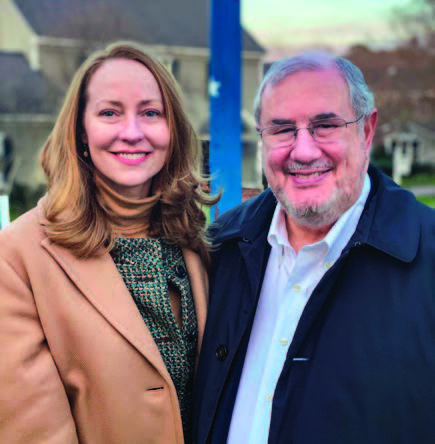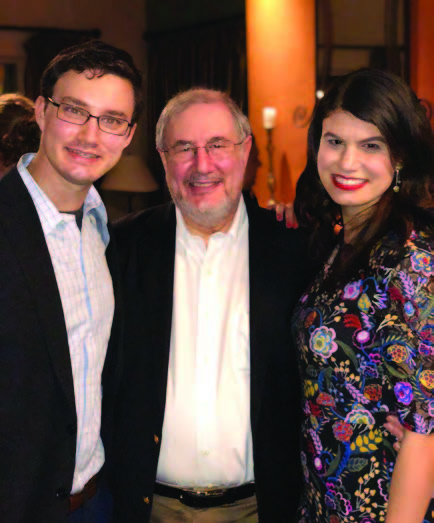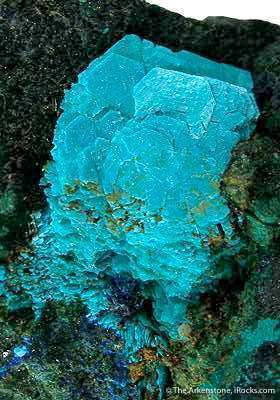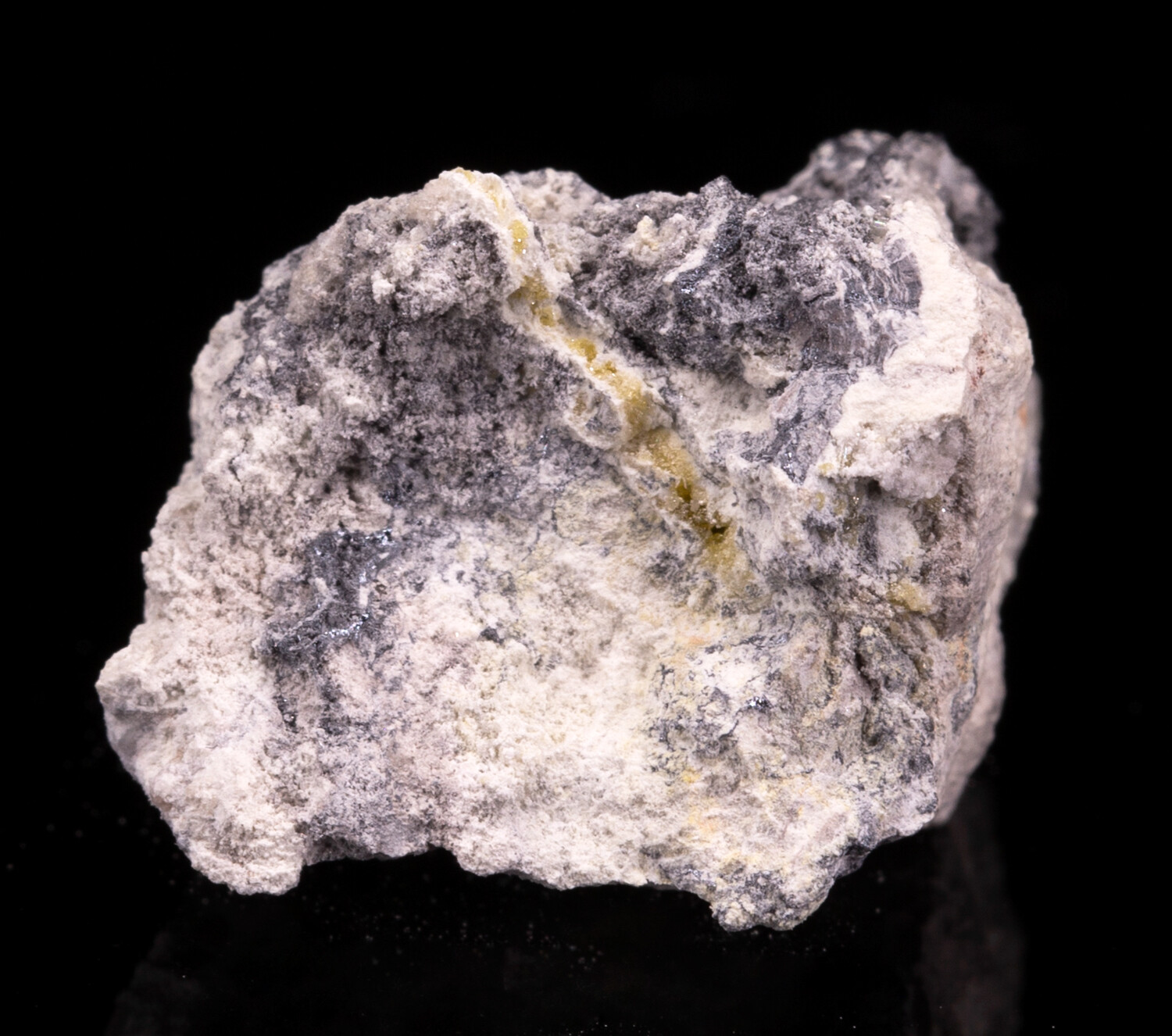In Memoriam: Mark Neil Feinglos (1948–2020)
Adapted with permission from Rocks & Minerals, volume 95, September/October 2020 for publication on iRocks.com.

Mark with his wife, Susan Totten Feinglos.
Mark Neil Feinglos, MD, CM, passed away unexpectedly on 14 March 2020 (at age seventy-two). He died in the home he loved in Durham, North Carolina, where he had lived for more than forty years. Mark Feinglos was born on 23 February 1948, in Syracuse, New York, the only child of Bertha and Clarence Feinglos. When Mark decided to attend medical school at McGill University in Montreal, his mother proudly began referring to him as “My son, the doctor,” and she would only ask for him that way on the phone ever again: “Is my son, the doctor, there?” Ever a man of many interests, Mark had one, central lifelong passion as he went through school and career: mineral collecting. In fact, most people in the mineral community were not familiar with Mark’s lifelong work in medicine and probably assumed the “Dr.” in his title was actually a doctorate in geology.
Mark began collecting minerals at the age of five when his aunt bought him a boxed set of minerals as a gift. This quickly became his favorite toy, and his mother supported his budding passion, patiently taking him to mineral stores and shows in nearby cities throughout his early years. Mark’s passion for mineralogy grew over the course of his life and saw him building one of the most scientifically important private mineral collections in the world. His undergraduate degree, also from McGill, was in geology.
At McGill, Mark met his first wife and ultimately the mother of his two children, Sue Goldman Feinglos. Mark and Sue moved to Durham in 1972 when Mark began his residency at Duke University Medical Center. He never left Durham or Duke after that— something highly atypical for a physician. He rose to become Chief of Duke’s Division of Endocrinology for more than a decade, carefully balancing immense responsibility to the hospital and devotion to his family.
Mark was an incredibly committed husband and father, taking on the role of two parents to his young children when Sue was diagnosed with brain cancer in 1994. Sue had become the highly regarded Director of the Duke Medical Center Library after a long career there. She fought the effects of cancer valiantly for eight years, but she could not have done so without her husband’s love, support, and coordination of her care across years of tests and bad news—which he always met with dedication and hope. From Sue’s diagnosis to her passing in 2002, Mark was there for her. In his eulogy for his wife, Mark stood with his children at his side and said that instead of ever suggesting that their mother had lost her battle with cancer, to remember instead that she “retired undefeated.” Mark also persisted through these incredibly challenging times, and he was there for his children every step of the way. He never missed a parent-teacher conference, a school play, or a competition. The family ate dinner together around the kitchen table every night, with Mark’s delicious cooking sustaining everyone with love and support. Mark was an amazing father, always generous with his time and a word of advice, always stepping out of meetings to take a call from either of his children, and always bursting with pride to share his children’s accomplishments with anyone who would listen.
Mark liked to say that he was very lucky to fall in love twice when some people don’t even get lucky once, and that he, apparently, only married “Susans.” He first met Susan Totten at Duke Hospital in 2007 when she was working there as a Registered Dietitian Nutritionist in endocrinology. They enjoyed ten years of marriage together. In 2008, Mark and Susan published an editorial together on diabetes research in the Archives of Internal Medicine. It is safe to say that Mark’s contributions to the field of endocrinology have enabled people with diabetes to live better lives all over the world.

Mark was not yet ready to retire and remained diligent in his robust career, pursuing many dozens of grants and studies, writing publications and articles, and giving talks—all far too many to recount here.
But Mark would often say that his research in the medical field would not be remembered fifty years from now— the science evolves so quickly that today’s discoveries will be supplanted by tomorrow’s innovations. Instead, Mark said he would be remembered for his contributions to the field of mineralogy.
Over the years, Mark became an expert across all aspects of minerals, eventually focusing on building his own collection as a repository of diverse and historical mineralogy. He loved German minerals, complex chemistry, and Tsumeb. He loved bornites (nobody understood why) and hated borates. He loved historic labels for the stories they told of mineralogy over time, not just to track ownership of a specimen. Mark’s collection has been a teaching tool for many people through the years, and his family is sure that it will continue to be long after he is gone.

Ex. Dr. Mark Feinglos Collection
At first look, his collection might seem random, but it was not. Instead, it was more than twelve thousand specimens—groups of minerals that, when arranged together, could illuminate and educate. To visit Mark, see his collection, and talk about it with him was literally to receive an education. In fact, Mark had a long-running dialogue with the late Kay Robertson in which they helped each other complete and build their German suites. He liked to joke that the only time somebody had bested him on a trade was when Kay came to visit and traded him out of the best twinned copper from Germany, a little jewel he never forgot. (When Kay sold her collection thirty years later, the specimen came back to him, and she commented that Mark was her only worthy trading adversary in the United States.)
Mark also assembled a robust suite of type minerals, arranged in a single wooden cabinet to the side of the others for protection and safekeeping. In building this suite, he had a friendly competition with his best friend, the late Bill Pinch, to acquire rare study pieces. But often they’d end up trimming the pieces in half to share with the other. These are probably the largest collections of type specimens in private hands, and the two of them engaged in amiable competition for decades, hoping the collections would both end up together in the same museum someday.
In the 1990s Mark was the mentor to a group of young dealers in the early world of internet mineral dealing. By the late 1990s he was basically “godfather” to a small group of dealers selling rare species online, which he actively encouraged to broaden interest in the wider world of minerals and collecting. Some of those early internet dealers included Rob Lavinsky of Arkenstone, Jordi Fabre of Fabre Minerals, Jasun McAvoy of Mineralman, and the late John Veevaert of Trinity Minerals, all of whom visited frequently to look and learn in person. Mark was absolutely open with his knowledge and his heart, sharing minerals and his collection with anybody who enjoyed them regardless of stature and age. He served as an online referee for all kinds of species and research questions in the era before Mindat really became established.
Mark was absolutely open with his knowledge and his heart, sharing minerals and his collection with anybody who enjoyed them.
Mark identified many new minerals, as he was often sent specimens that could not be identified. He and Bill Pinch would surely have been named the world champions of sight-identification of minerals. Working within Duke’s mineral collection (they lacked a curator, and this crazy doctor from the Medical Center was willing to step in and curate, organize, and catalog in his spare time), Mark discovered something that looked like a new mineral. He worked to name it dukeite in honor of the university and the Duke family. It was the first U.S. university to have a mineral named for it. In 1997, Mark was honored to have the mineral feinglosite named for him after he was the first to notice the unfamiliar specimen in the Natural History Museum, London.

Mark spent his life continuing in the historic tradition of mineralogy, discovering for the sake of discovery, and living out his passion for science. He was honored to be an active contributor of the RRUFF Project at the University of Arizona. Mark won the William Pinch Medal in 2003, its second recipient after its namesake, Bill Pinch. The Pinch Medal is awarded every other year to recognize major and sustained contributions to the advancement of mineralogy.
Mark Feinglos lived a full life with people he loved and people who loved him. He was a true intellectual, kindhearted, a collector, and quick with a keen sense of humor. He will be missed every day. Mark is survived by his wife, Susan Totten; his children, Daniel Feinglos and Rebecca Feinglos Planchard; his son-in-law, Sean Planchard; his sister- in-law, Laverne Vance; his brotherin- law, Jeff Vance; his nephew, Stephen Vance; and his mothers-in-law, Beryl Goldman and Lorine Totten.
Rebecca Feinglos Planchard
Rebecca Feinglos Planchard is the daughter of Mark Feinglos.
Robert Lavinsky
Dr. Robert Lavinsky, a lifelong mineral collector, is the owner of The Arkenstone.